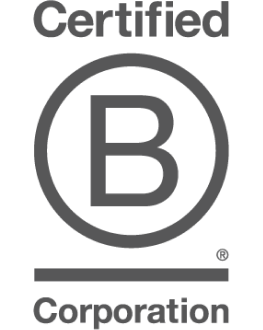Your Bag is Empty
FREE SHIPPING ON ORDERS OVER $100
FREE SHIPPING ON ORDERS OVER $100
FREE SHIPPING ON ORDERS OVER $100
FREE SHIPPING ON ORDERS OVER $100
6 min read 1 Comment

Gua sha (pronounced gwah-shah) is an ancient Chinese medicine technique that involves using a flat stone to scrape the skin initiating blood flow, thus improving circulation to the area to reduce inflammation and speed healing. Gua sha techniques can be applied to the face and body. Gua sha techniques may be performed by an acupressure practitioner or on yourself using the techniques outlined below. For the purposes of our discussion, we will be focusing on self-performed facial gua sha.
Traditionally, gua sha is done fairly aggressively on the neck, shoulders and body to help relieve muscle tension. Traditional gua sha performed by a practitioner can cause dark marks that look like bruising, technically referred to as transitory therapeutic petechiae. Facial gua sha is different than body gua sha. Facial gua sha is a much more gentle and soothing face sculpting technique that is has become a darling of at-home beauty and wellness practices. With facial gua sha, the goal is to simply energize the muscles and fascia of the face, and use light pressure with lymphatic drainage to flush out toxins and stagnation.

Gua sha is not ideal when you have sunburn, infections, open wounds, damaged skin, skin cancer, severe acne, illness, swollen lymph nodes or fever. If in doubt, consult your doctor.
You can practice gua sha facials without any concern, but ask your doctor before practicing gua sha on your body.
It’s important you use a good oil or cream for both your skin and the slip required for effective technique and prevent any pulling of the skin. Rosehip oil, hempseed oil, grapeseed oil, sweet almond oil, jojoba oil, squalane oil are all good choices or a good face cream since the product will be well worked into your skin. Depending on the breadth of massage, you will be using from 1-3 teaspoons of product.
There are no rules for how often to do gua sha. However for visible results, we recommend doing guasha 3- 5 times per week. Once you have your desired results you can maintain them by doing gua sha 1-2 times per week or as needed.
When doing this at home, the key is to always work from the inside of the face then go outwards. And ALWAYS scrape UP, never down. Don’t ever pull your face down. It’s also CRUCIAL to drink water after any kind of lymphatic drainage.
Gua sha should be performed with light pressure and is especially beneficial in the morning when you wake up with a puffy face or to work out worry lines between the eye brows.

Gua sha facial lifting tools come in a variety of shapes and sizes. It is important to choose a gua sha lifting tool that is durable, smooth, easy-to-clean and gives you the control desired. The Amazonite Fish-Shape Gua Sha Facial Lifting Tool is our favorite! We love the length of the longest side, the points on the tail, the v-shape inside the tail and the head of the fish. All of these edges are useful in myofascial massage, acupressure and trigger points on the face and elsewhere on the body.
1) The long side of the fish is for lymphatic drainage and lifting on the forehead, cheeks, neck and chest.
2) The head of the fish is for relaxation of muscle tension and lymphatic drainage around the eyes.
3) The inside of tail of the fish is for sculpting the jaw line, cheek bones, brows and third eye.
4) The points of the tail of the fish are for acupressure, trigger points and wrinkle erasing using tiny zig zag motions to stimulate blood circulation.
PREPARE SKIN
Using both hands, make two fists and broadly sweep your forehead and cheeks with the inside fingers working from the center outward using moisturizing oil or cream. Repeat 10-20 times using light pressure. With both hands, then pinch your eyebrows with your thumbs and index fingers, drawing them outwards toward the temples. Apply firm pressure along the edge of the eyebrows. Remember to lift your fingers from the skin between compression to protect the fragile skin around the eyes.
Add moisturizing oil or cream as needed when moving through each each area of the face, neck and chest to keep good slip and prevent pulling of skin.
EYES
Place the round head of the gua sha tool in the temple area. Lightly stroke the area from the temple (outermost part of the eye) and move slowly under the eye toward the nose. Proceed from the inner eye area, up toward the upper part of the eye, and out toward the temple again. Repeat in circles 10 times with very light pressure.
FOREHEAD
Select one side of the face. Sweep from the top of the center of your forehead (by the hairline) and scrape the gua sha head down the hairline to the ear. Repeat 10 times with light pressure. Continue under the previous path with 10 strokes in the same direction. Continue until you have worked through the entire forehead. 3-4 times should be enough. The work the “third eye” area in between the brows upwards with the tail end of the gua sha. And finally the temples with the head of the gua sha sweeping into the hairline.

BROWS
Place the head of the gua sha between the eyebrows and scrape up to your hairline. Repeat 10 times with light pressure. Place the tail of the gua sha between both eyes and work outward hugging the brow in the groove of the tail to help diminish worry lines.

NOSE
Place the tail of the gua sha at the top of your nose and scrape down to the tip of your nose. Repeat 10 times with light pressure.

CHEEKS
Continue with the gua sha head and press lightly from the side of the nose out to the ear. Follow the path just above the cheekbone. Repeat 10 times with light pressure. Continue sweeping, under the previous path, from the side of the nose out to the middle of the ear. Follow the path in the middle of the cheekbone using the broad side of the gua sha. Repeat 10 times with light pressure. Continue sweeping from the side of the nose, all the way under the cheekbone, until you reach the earlobe. Repeat preferably 10 – 20 times with light pressure. Continue scraping from the corner of your mouth up to the lower part of the ear. Repeat 10 times with light pressure.

UPPER JAW
Continue with the gua sha head and apply pressure under both cheekbones where they meet your nose. Move firmly under the cheekbone and stop when you reach the tip of the cheekbone (just below the pupil when you look straight out). Hold the pressure point while taking a minimum of 2 deep breaths. This point will typically be sore. Continue out toward the ear. Work from the mouth towards he ear to help diminish frown lines.

LOWER JAW
Use the wide part of the gua sha and sweep from the middle of the chin, along the jawline, and out to the earlobe. Repeat 10 times with light pressure. It can also be beneficial to scrape a few times along the jawline with the tip of the gua sha tail.
NECK
Stimulate lymphatic drainage by scraping the gua sha head from the lower front part of the ear, down the neck, to the collar bone. Repeat 3-5 times, to drain lymphatic fluid, using mild pressure. End the massage, on this side of the face, by stroking the gua sha head from behind the upper ear and down the neck with very light pressure, 3-5 times, to drain to the lymph one more time. Lymphatic points are found both in front and behind the ear.

CHEST
Open the lymphatic points, by placing the wide part of the gua sha and sweeping from the center out to just below the collar bone on each side.
Make sure to repeat all areas on both sides of face.
Once you have finished your practice, wash the gua sha tool thoroughly with gentle dish washing liquid and warm water and dry thoroughly. Since our Glacial Glow gua sha is genuine Amazonite, you need not worry about color fade that happens to many cheap dyed tools. Once dry, professional acupressure practitioners will spray the gua sha with either an isopropyl alcohol spray or a colloidal silver spray as either will kill 99.99% of bacteria. Let the gua sha dry and return it to safe keeping before the next treatment.
Comments will be approved before showing up.

2 min read

5 min read

3 min read 2 Comments

Certified B Corps meet the highest verified standards of social and environmental performance, transparency and accountability.

Giving back is everything. We humbly donate 2% (yes, 2 x 1%) of annual revenue to our thoughtfully selected nonprofit partners.

We pledge our ingredients and products are cruelty-free (free of animal testing) at all stages of product development.

The mother bear and her cub logo signify our products are 51%+ hand-harvested, handcrafted and manufactured in Alaska.

Certified B Corps meet the highest verified standards of social and environmental performance, transparency and accountability.

Giving back is everything. We humbly donate 2% (yes, 2 x 1%) of annual revenue to our thoughtfully selected nonprofit partners.

1% for the planet
We humbly donate 1% of annual revenue to our thoughtfully selected nonprofit partners.

The mother bear and her cub logo signify our products are 51%+ hand-harvested, handcrafted and manufactured in Alaska.
Heather
March 13, 2023
This looks great!